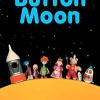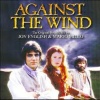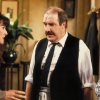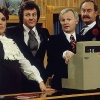Let’s face it: there are only two reasons that anybody watches Antiques Roadshow aren’t there? One is in the hope of seeing the faces of a dear old couple when the dusty old painting they bought at a jumble sale forty years ago is valued at 10 million pounds and the other is in the hope of seeing the face of somebody else alter quickly from smug to crestfallen when the vase they had assumed was worth a fortune turns out to have been made on a Taiwanese production line three years previously.
Running on the BBC since 1979 the highly successful format of The Antiques Roadshow has remained largely the same since the outset. A group of antique experts travel up and down the country, appraising antiques that are brought in by members of the public. Each episode takes place at a different, and generally stunning, location in the UK, usually a place of cultural or historical significance. Woburn Abbey; the Royal Horticultural Society gardens at Wisley, Surrey; King’s College, Cambridge and Winchester Cathedral are just a few of the many that have been visited so far.
The show spawned from a BBC documentary two years earlier which featured an auction house that was touring the West Country.
There have been 38 series to date, with 707 episodes in total. 6 presenters have taken the helm, starting with a short turn from Bruce Parker (South Today, Nationwide) in 1979. He was replaced by Angela Rippon (Come Dancing, Top Gear, that ‘what great legs she’s got’ sketch on Morecambe & Wise) the same year, and the much-loved Arthur Negus after that. He stayed with the programme until 1983, sharing the screen for the last two of those years with Hugh Scully. Michael Aspel (This is Your Life, Aspel & Company) took over in 2000 for seven years before current presenter Fiona Bruce took the reins in 2008.
Counter to the opening paragraph of this article, it’s actually very rare that you see somebody’s face fall when the item they’ve brought in turns out to be a fake and worth 99.5% less than they thought – the BBC kindly spare the blushes of those people. One man, in 2009, brought in a bottle that he had spent over £1,000 on, only to be told that it was actually an olive oil container from Tesco. Ooops.
A lot of the antiques that come to the show don’t have a huge value but they can get included if they have an interesting history or have some relevance to the place that the programme is being recorded in. And, obviously, not everything that is brought to the experts gets on to the telly; while everything is appraised only about 20 pieces make it on to our screens in each broadcast.
It was in 2008 when the most valuable piece that has ever featured on the show to date was discovered: a scale model of Antony Gormley’s Angel of the North sculpture from the 1990s, brought to the team during series 31. This was owned at the time by Gateshead Council and valued by art dealer and historian Philip Mould at a cool £1 million. There was a news item, however, in October 2015 which announced that an even more expensive item has been discovered at a roadshow in Harrogate and will be unveiled on the show in 2016. No details were given other than it belongs to a sporting institution and is a ‘world famous piece’ - a tabloid newspaper later suggested that it could be a replica F.A. Cup – and further to this there have been accusations that this could merely be a publicity stunt by the BBC rather than a true discovery.
Whether this new item is valid or not, there has actually been a find on the show more valuable than both these pieces already: chandeliers worth £7 million were recognised by the show’s glassware expert of the time, Andy McConnell, during series 32. These were already hanging in the Bath Assembly Rooms when the Antiques Roadshow arrived there though, so can’t be counted as something brought in by a member of the public.
The television show has stepped out of the UK on several occasions (Canada in 2001 and Australia four years later, amongst others) and the set-up has been copied by other television companies across the globe.
There have been numerous Antique Roadshow spin-off programmes: 1987 saw Antiques Roadshow: The First Ten Years look back at, well, the first ten years of Antiques Roadshow…1991’s Antiques Roadshow Gems showed items that had featured on the show in previous years, as well as going behind the scenes of the programme and interviewing the experts (this was reprised in 2009/10 with Priceless Antiques Roadshow). Other shows have celebrated different anniversaries of the programme and there was also 20th Century Roadshow in 2005. Hosted by mums’ favourite Alan Titchmarsh, this looked at modern collectibles and ran from April to June of that year. In 2008 there was a special for the leaving presenter, Antiques Roadshow: Farewell to Michael Aspel and since then there has been the Restoration Roadshow, the Shakespeare Special, the Diamond Jubilee Special, Antiques Roadshow Detectives and the Balmoral Royal Special – all fairly self-explanatory.
There have also been several children’s versions of the programme, broadcast as Christmas specials from 1991 until 2006 under the title Antiques Roadshow: Going Live (1991 only) and Antiques Roadshow: The Next Generation. They used the same theme tune, albeit reworked to make it more appealing to its younger audience.
And talking of the theme tune, one of the most distinct things about Antiques Roadshow is the opening theme. It’s one of those pieces of music that immediately takes you back to cosy weekends when you were a child, akin to the tunes of Grandstand, The Pink Panther Show and Songs of Praise. When the show originally began, Brandenburg Concerto No. 3 by Bach was used to introduce the antique action but this was changed to an original composition in the early ‘90s. Tim Gibson and Paul Reade’s (Reade is also responsible for the themes to The Flumps and Crystal Tipps and Alistair) melody is now instantly recognisable and strangely comforting for the nostalgia hit it brings, even if you don’t actually watch the show itself.
Antiques Roadshow has now been running for 37 years and it shows no sign of stopping. There will always be a market for the voyeuristic picking over of other people’s possessions and, let’s face it, they’re never going to stop making antiques, are they?














Do You Remember Antiques Roadshow?
Do You Remember Antiques Roadshow?